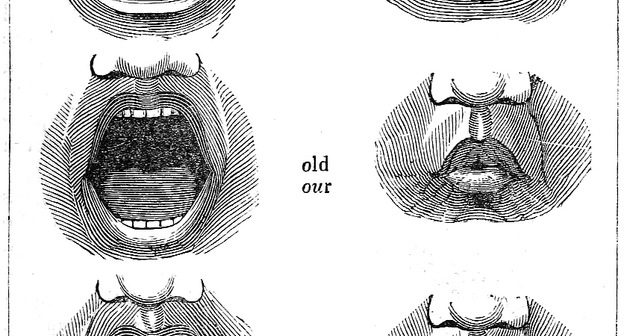
This page is also available in / Cette page est également disponible en:
![]() Francais (French)
Francais (French)
For non-Francophone singers, the difficulties involved in singing French correctly can be easy to explain. The issues are: French has more vowels than many other languages, especially English, with some peculiar nasal vowels. Liaisons are also risky for non-French speakers, and there are some basic guidelines for those.
It’s also commonly said that French does not have a tonic accent, so the problem arises: how can a singer make the phrasing sound “colloquial” without avoiding the accents that are specific in classical music, i.e. the first and third beats in a 4/4 bar? Then there are the grammatical difficulties, which are frequent, like verb endings that should be silent (“ils chantent” should sound like “il chante,” for instance). All these I will briefly address and try to explain from a singer’s point of view, because a singer has to solve problems that are non-existent for the spoken voice.
First, vowels: As a general rule (with exceptions of course), a French vowel is long when accentuated with a circumflex or followed by only one consonant. It is short when followed by two consonants. Let us take these cases in alphabetical order:
A: French has two a’s: one is very similar to that of the English “fat,” broadly open and not too “yawned.” as in “calme.” The second, usually marked “â,” is deeper, as in “pâle” — even deeper than in the English “past.”
E: More problematic are the “e” and “eu” (or “œu”), because many are written one way and yet have more than one option for pronunciation: “il pleure” and “cœur” (with an open “e”), and “il pleut” and “vœu” (dark “e”).
I: For “i”, the long and very horizontal one, it’s easy. This is similar to the English sound in “sea,” as in “fini.” When some onomatopoeic idea is involved, as in “pique” or “tic-tac,” the “i” is shorter, as in the English “sick.”
O: There are two o’s. Again a clear one, usually followed by two consonants, as in “mort,” and a dark one, written “ô” or “au” or “eau,” as in “pole,” “pauvre” or “peau.”
U: The sound “u” is similar to the German “ü” as in “suss,” here again there are some exceptions when onomatopoeic ideas are present, as in “stuc”, where the “u” is short.
OU: This deepest of all French vowels, is usually dark, as in “doux” and never diphthongized. It is shorter, as was mentioned before, when followed by two consonants, as in “court.”
The nasal sounds are more “nasalised” than strictly nasal. Try arching the palate up like the vault of a gothic cathedral when forming an “a” and you will approach the “an.” And so on, from “e” to “en,” from “i” to “in,” from “o” to “on,” from “u” to “un.”
Another problem is the sound “ui” (as in “nuit,” “fui” or “bruit”). It is not two sounds but one, and one should go directly to “i” via a “u,” as in a whistling process (in French an onomatopoeic expression for something disappearing in a flash is “pfuit,” almost done as a whistle).
For liaisons and phrasing the rule is quite simple: if the text is a versified poem, poetic rules apply. I recommend David Hunter’s book Understanding French Verse: A Guide for Singers, published by Oxford University Press (2005), for a practical and well-documented review of the very strict rules that exist, and how famous poets change them. All great French composers knew these rules, which were taught at college (they no longer are).
Just a few other things: in Alexandrine verse (made of 12 syllables), the only possible cut is in the middle, after the sixth syllable. This will help you choose where to breathe in many a song with this feature! Another rule that is easy to understand are the “masculine” and “feminine” endings of a verse. Masculine denotes when a singer is to finish a phrase with a fully sung syllable, as in “voi-là,” where the “à” is strong. Feminine means that you fully sing the penultimate syllable, and let the end be: “cal-me.” The mute “e” at the end of a word should always sound unaccented; try to have the “e” sound going up towards the palate, never forward. Try “bleue,” doing a very dark and accentuated “eu,” then lift the sound and open it up for “e.” Who would have thought how exciting the colours in a two-syllable word could be!
And to end this short à-propos, never forget that no good composer would ever indicate to a singer where to take a breath. When they write a silence or a cut, it is for the sake of the poetry itself, and to avoid hiatus, which is strictly forbidden: “ces rais sur lesquels / il ne faut pas que l’on marche” (in Poulenc’s Montparnasse). Most of them have accompanied singers, and respect them too much to give them orders. After all, a singer is a musician, but also a diseur!
This text by the noted baritone François Le Roux was originally published by the internet site
www.sparksandwirycries.com.
This page is also available in / Cette page est également disponible en:
![]() Francais (French)
Francais (French)














